“I’m not going to Machu Picchu. I refuse to be around thousands of other tourists,” said Antonio, my tent mate during the Choquequirao trek.
Rumour has it that there is a set of ruins near Cusco that is almost as magnificent as Machu Picchu, but far less crowded.
Popular guidebooks noted that there are fewer than 30 visitors to Choquequirao per day, compared to the over 3000 at Machu Picchu.
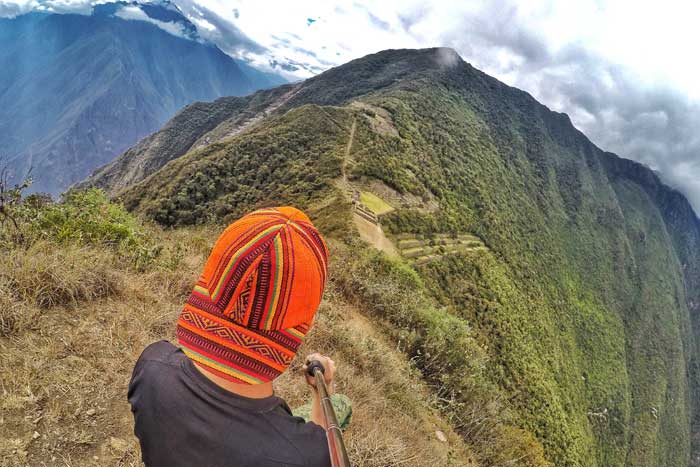
Why?
The only way to get there is to do a two days’ trek across and down a valley, and up the other side, and two days to get out. There is no road access to the site.
There are plans to build a cable-car connecting the hard-to-reach ruins to the masses in a few years’ time. Then, Choquequirao would receive thousands of visitors each day.
Plus, the Choquequirao trek is touted as one of the hardest trek in the Cusco region. Call it a challenge, call it pride, call it whatever you want. Knowing all these, I had to do it.
Independent or Tour?
Now, the Choquequirao trek is definitely do-able independently, but I had no equipment, no food and not much experience. Plus, after my Salkantay experience, I thought making some friends would be fun.
That is why I decided to go on a tour.
The problem with the Choquequirao trek is that it is an uncommon trek, so rare that many agencies do not offer it. I was fortunate to walk past one tour office that has a departure date on the window – meaning there was a group already formed.
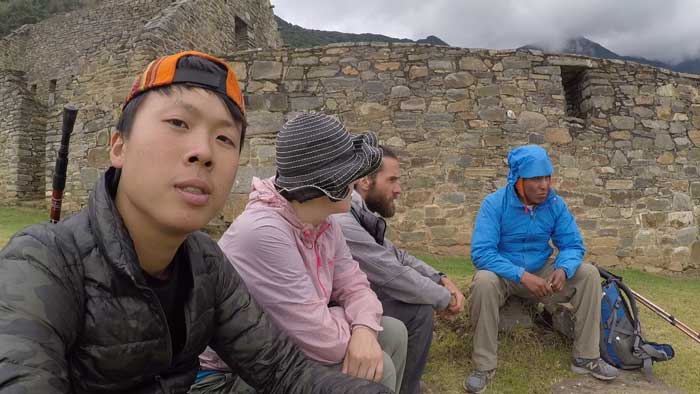
“It is twice as hard as the Salkantay trek,” the guy warned me. He drew out the route and explained the details. Just from the hand-drawn picture, it looked tough indeed.
I did not sign up immediately.
I left, contemplated for a couple of days, then came back for it. As an uncommon trek, it is expensive. I paid USD $280 for the 4 days’ trek, which includes a guide, transport, meals, camping equipment and a mule that carried our additional baggage (up to 7kg).
Choquequirao Day 1: Capuliyoc – Chiquisca – Santa Rosa Baja
My guide, Miguel, picked me at my apartment at 5 am right on the dot – something unheard of in Latin America.
A French (Antonio) and an American (Cassandra) joined me in the 4hr car ride to the trailhead – Capuliyoc. That was it. Three people in my group, compared to the 17 in my Salkantay Trek. That’s how ‘off the beaten track’ Choquequirao is.
At the start of the trailhead were a few eateries offering breakfast and snacks and last-minute equipment. We had breakfast there when a little girl joined us.
3-year-old Lala wasn’t shy at all. She pulled herself up to our table, brought some stick-it notes and passed us a pen. She then ordered us to draw anything she knew with her vocabulary. Who could resist a cute 3-year-old?
Once fed (and amused), we started our trek.
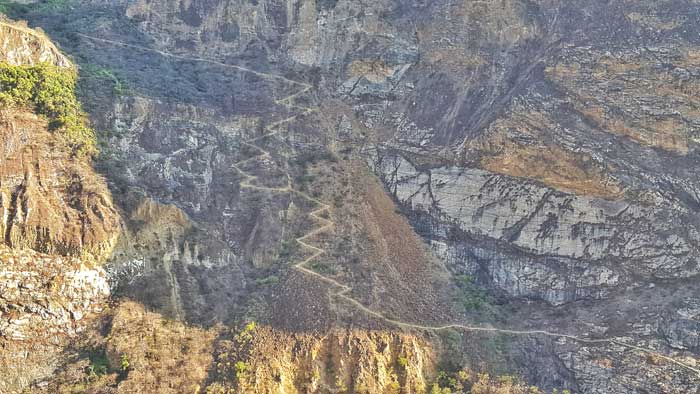
To reach Choquequirao, one has to descend a canyon, cross a river and up the other side. Hence, the first part was pure descent.
Loose rocks formed the path. Burnt down trees flanked the way. The sun was our companion.
A handful of trekkers climbed up towards us. They were happy to have ended their ordeal, while we just got started.
There were groups of middle-aged guys going both ways. If they could do it, I could do it, I kept telling myself. It wasn’t crowded, so we saw the same people everyday. By the end of the trek, we became friends.
The river guided us while a snow-capped mountain whose name I couldn’t remember looked over us.
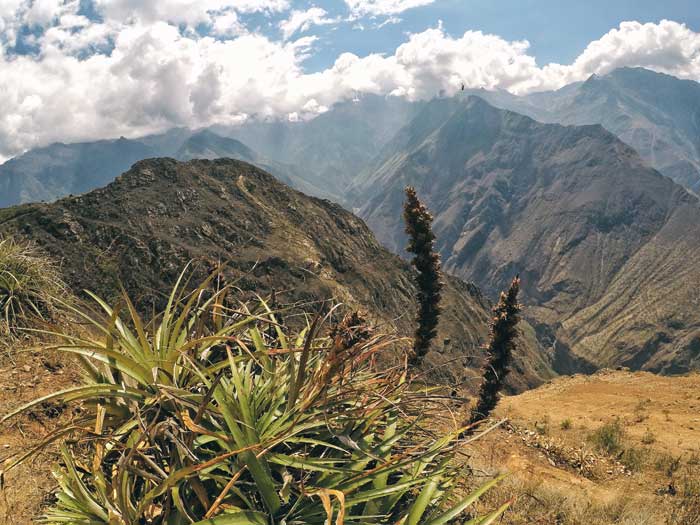
2.5 hours later, we arrived at Camp Chiquisca, but we weren’t done for the day. We were only here for lunch and a short nap.
I wanted to reconnect with nature, but the grass we napped on had lots of insects, mosquitos and even horse shit. That’s not what I meant by ‘reconnecting’.
Feeling refreshed, we continued an hour down to the bridge that connects the canyon, registered our names and continued up the other side.
It. Was. Steep.
We split, and I was alone. Taking one step at a time against the steep uphill battle. They warned me it would be dry at this part, and my throat was dying for water. The strong winds by the Apurimac river worsened the dryness.
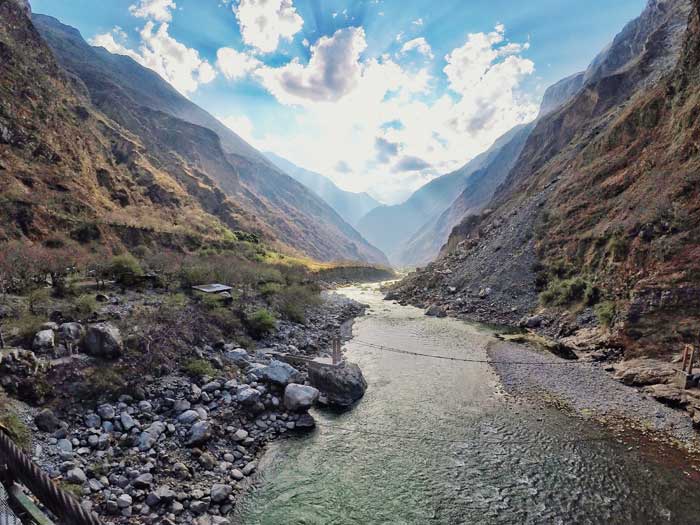
Cacti and dried rocks formed the new landscape. Sand flies swarmed me each time I stopped for water or to catch a breath. The only way was to keep on going.
Two hours passed and I reached camp. I didn’t see anyone. There were three Santa Rosa campsites (1 high, 2 lows) and I was waiting at the wrong one. Our horseman found me and brought me back to ‘civilisation’.
We had a cold shower, a warm dinner and a good night’s sleep under the stars-filled sky. Day one was easier than I thought.
But having descended this side of the canyon, I wasn’t looking towards the final day back up.
Choquequirao Day 2: Santa Rosa Baja – Marampata – Choquequirao
A 5:30am wake-up call with hot coca tea by the chef and a fulfilling breakfast later, we made our way to 2nd camp.
Entirely uphill switchbacks, it was gruelling - purely mental. I forced myself to keep going, no matter how slow I was. I ended up being faster than most people who stopped way more than they should have.
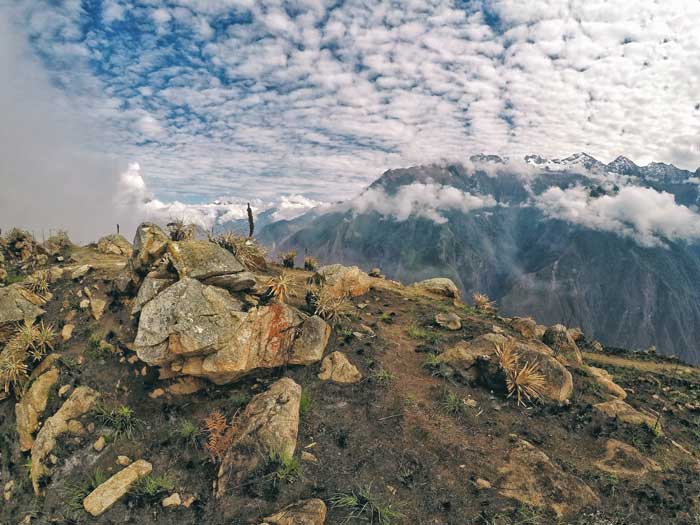
Thankfully, we started the day early and the sun wasn’t fully out so the weather was on our side. I was proud to complete the 2 hours’ climb in 1.5 hour.
The second campsite, Marampata, seemed more like a little village. There were local restaurants and lodging. Horses, puppies and little ducklings roamed about.
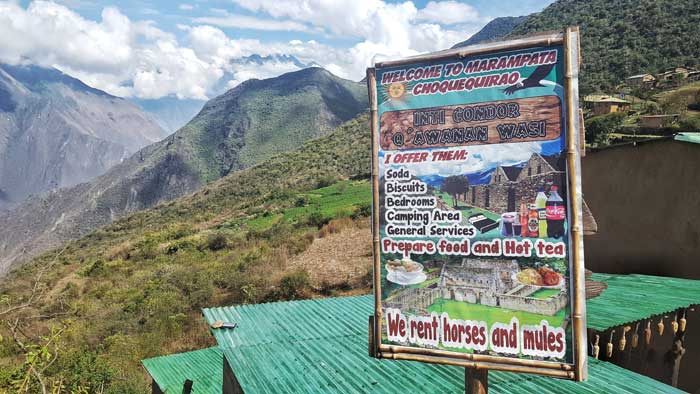
We met an American here who said he did the hike without a guide nor any equipment. The lodging was only PEN $20 (USD $6) for a night and there are restaurants about. If I’ve known…
We had an early ‘lunch’ at 10 am and proceeded towards our destination: Choquequirao.
The path from Marampata to Choquequirao was almost 2 hours, alternating between gentle ascends and descends. Trees shaded the path, making it a relaxed walk.
The desert-like landscape from the previous day gave way to the rainforest of this day.

At the ticket control, as I registered my name I flipped through the pages for a quick scan of the visitors. I saw 1 Chinese, 1 Taiwanese, 1 Filipino, and the rest all Peruvians, Americans or Europeans.
If what the guard said was true, I could very well be the first Singaporean at Choquequirao.
As we got closer to the sacred site, we got more excited. Terraces on a hillside formed the first sight and we gasped at the majesty of it. The hillside was steep, yet the Incas managed to carve numerous layers of terraces there.
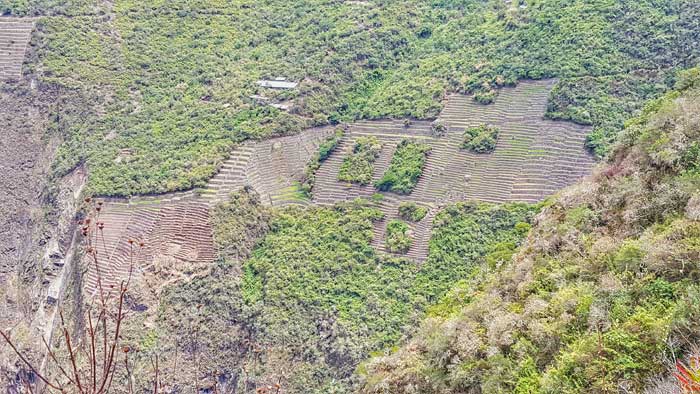
And then, we saw it:
The sign that says ‘Choquequirao’.
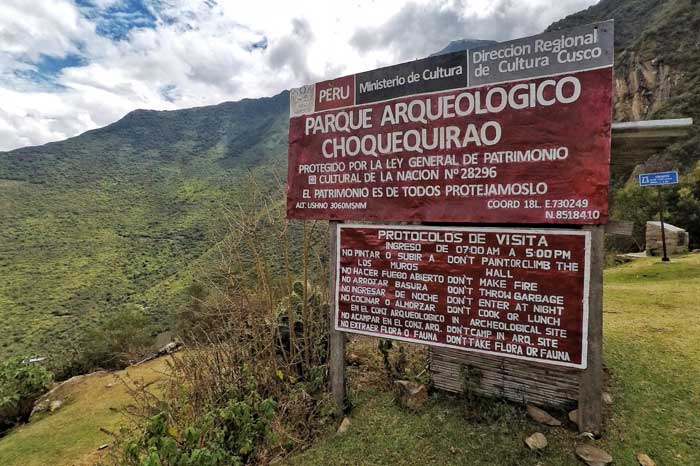
To be honest, getting here wasn’t as tough a trek as I expected. It was getting here AND to return that made it difficult. More on that later.
We walked along a stretch of road right by the first walls, a stretch Miguel said the Incas used to enter the site. Something’s… different about these walls. The architecture here is not the same as the accurately-fitted rocks in Machu Picchu.
We stepped onto main plaza with a sense of accomplishment, but quickly put on our jackets. Choquequirao is exposed to the elements and is extremely windy.
The clouds that hovered right above the site added a mystical touch.
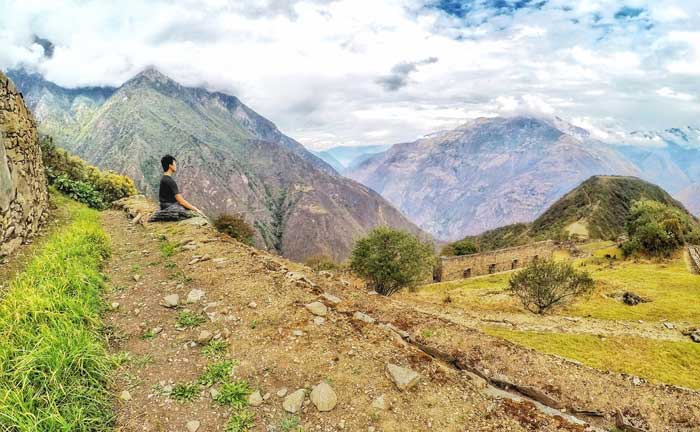
Choquequirao – An Introduction
Miguel sat us all down for storytelling time. He jokingly said he was gonna share in Quechua (the native language), then proceeded to explain in Spanish. Seriously.
It’s funny because none of our first languages is Spanish, but we all understood him well. I guess he just wanted to give his best explanation of the history of Choquequirao.
To him, Choquequirao was a sanctuary, a spiritual place, a ceremonial centre; unlike the over-commercialised Machu Picchu. It was indeed peaceful with the fewer than 20 visitors there.
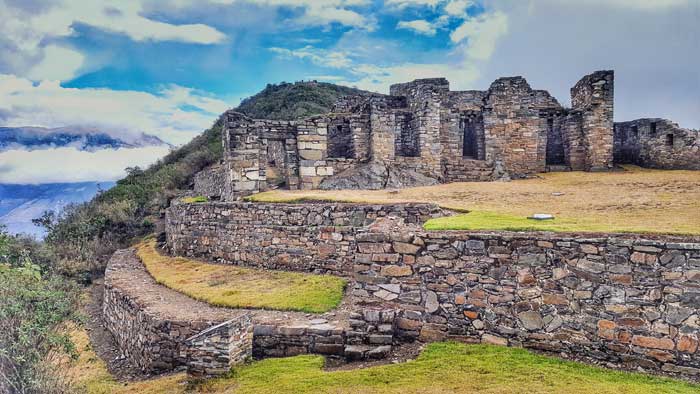
It was built by the Inca Emperor Pachacutec, around the same time as Machu Picchu was constructed. Many people say they have the same architecture but Miguel explained that for this site, the Incas ‘stole’ the architectural style from the Kuelap, a pre-Inca civilastion. The famous Kuelap Fortress can be found in the north of Peru.
Machu Picchu, Choquequirao and Vilcabamba (the real last refuge of the Incas) strategically form a triangle, with Machu Picchu being the most important place. The other ruins in the Sacred Valley and surrounding areas all surround Machu Picchu.
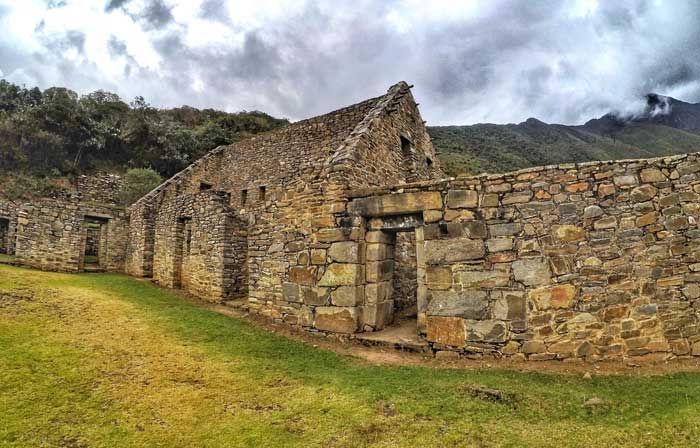
Whereas MP is built horizontally, Choquequirao was built vertically. The site seemed small, but that was only the visible areas. Only 30% has been excavated. The total size of Choquequirao is bigger than MP.
Miguel admitted:
Not much is known about Choquequirao. It could be a religious site, an economic capital or an administrative area. Another name for Choquequirao is ‘Ciudad Perdidad’ – the Lost City.

It started raining when Miguel was ending his explanation. We had 3 hours to explore the area. Rain or no rain, I was gonna make full use of my time. I trekked 2 days to be here!
Miguel mentioned a llama terrace some 20 min down some steps. We were excited to see some llamas and it was our first stop.
After braving the winds and rain, we arrived at the terrace TO NO LLAMAS. We turned back only to realise that the llamas were actually white rocks placed in the shape of llamas onto the terraces.
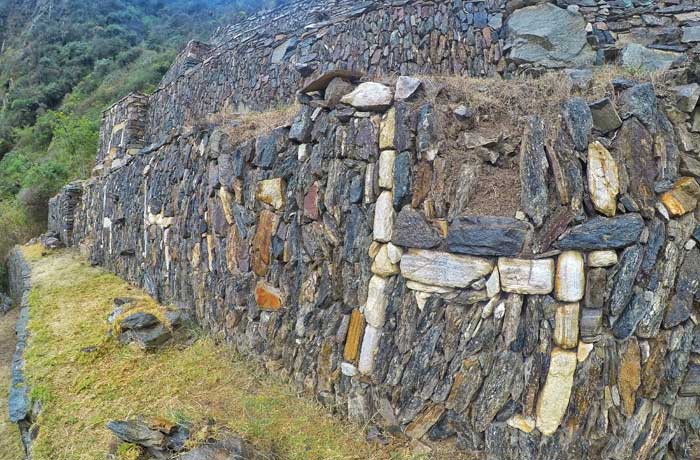
Wow, really?
We were of course disappointed, but a guide told us this was one of the most unique art pieces by the Incas in history, and it had significant meaning to him.
We headed back to the main site, split to explore the area at our own pace. I walked through the ruins that were once houses, climbed up the stairs to a vantage point and marvelled at the surrounding landscape.
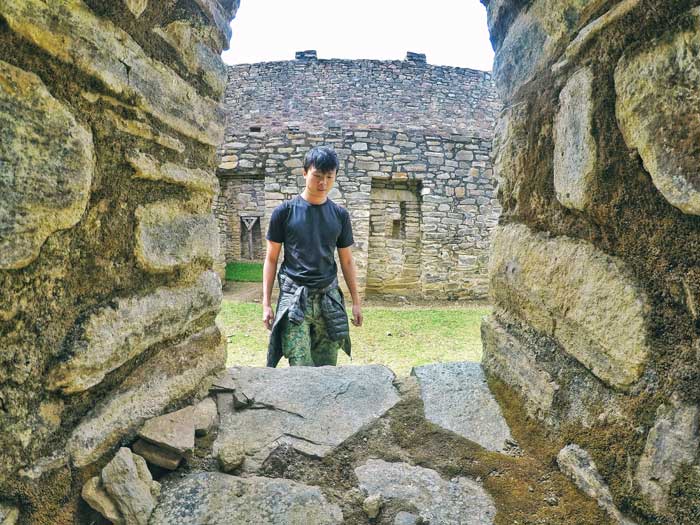
Green valleys, blue rivers and white clouds enclosed the area. I imagined myself as one of them, going about my daily life with such natural beauty.
We climbed up to the ceremonial area at the highest point of Choquequirao for the postcard picture of the sacred site. It was only 3200m but I felt like I was at the top of the world. There was hardly anyone there.
The brown-grey scattered ruins looked tiny amongst thick foliage of dark green trees. No wonder this place was hidden from the Spanish conquistadors.
Time passes quickly when you are wandering about the ruins and taking photos and it was time for us to return to camp.
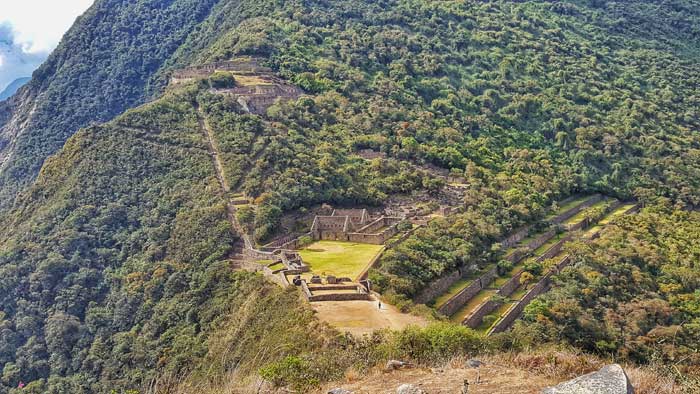
We traced the same way back and made it right at nightfall. Once again, stars filled the night sky and this time, it was too cold for a shower.
It was too cold for a good night sleep.
Day 3: Marampata – Chiquisca – Unnamed Campsite
It wasn’t ideal for the knees but I rushed down the path, determined to make use of the descent to cover as much distance as I could.
A combination of determination, gravity and lots of sand flies brought me down in 2 hours and another 1 hour up to the lunch spot. And hunger, of course.
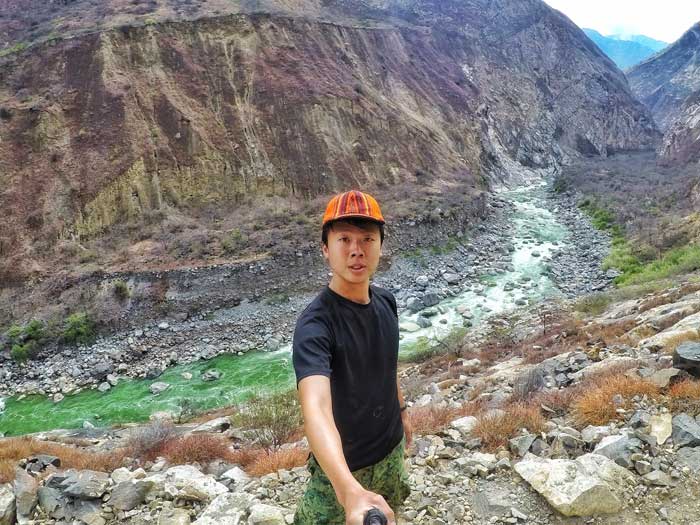
We had a choice to camp here for the night and make a gruelling 4 hours uphill climb to the finish point the next day or to continue.
We decided to go all the way.
But circumstances were not always on our side. When we arrived at an unnamed campsite with NOTHING at all, the horseman and guides wanted to camp here.
They were afraid it would get too windy and dangerous for the horse. Furthermore, there would be no food for them up at the top. Horses over humans, always.
And so, we camped at this empty campsite right by a single lady’s wooden hut. She was so happy to have visitors (and inflow of cash), and us, well we resigned to our fate.

It didn’t turn out too bad after all. We had a gorgeous view of the valley and river right in front of the tents and a clear view of the milky way. At one point we even saw Jupiter! And it turned yellow and pink for a short moment.
A group of middle-aged Peruvians joined us. Their tour package included foldable chairs, a huge tent for dining and best of all…. Wait for it… Portable hot water shower!
Yes! You read that right. Hot water shower! While we had nothing.
It is hard to explain but a helper would be outside of the shower-tent with what I thought to be an adjustable heater while an elderly helper would be fetching water for them. It was an amusing yet sad scene (for the elderly helper).
Of course, they paid much more than us.
Day 4: Unnamed Campsite – Capuliyoc – Cusco
This was the day I dreaded the most from day one. An uphill battle retracing our steps back to the trailhead. Each time I walked past a familiar milestone, the remaining trek was longer than I expected.
But like all obstacles so far, I just told myself to keep going and - surprise – I made it up to the trailhead in 1 hour 20 min. We were way ahead of time so Antonio and I simply hung out at the viewpoint for an hour, admiring the cloud-covered views and taking photos.
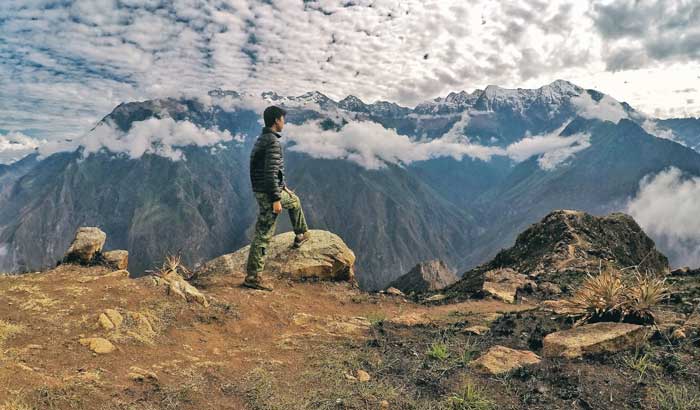
Back at the eateries where we had our first breakfast, I was greeted by a familiar face.
Cute little Lala came out of her house and looked at me, tilting her head. I burst into a huge smile upon seeing this little angel.
We hung out for a good 20 min while she scrolled through my phone’s photo and video gallery. Each time there was a female friend, she would ask if that was my wife. Such adorable innocence – she reminded me of my 2-year-old niece.
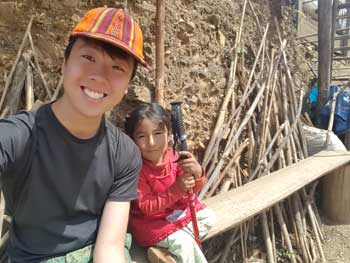

The arrival of our transportation signalled the official end of the 4-day Choquequirao trek.
- YOU MIGHT ALSO LIKE: Torres del Paine: Failing to Hike Nature's Wonders
A true off-the-beaten-trek with few tourists, it was an extremely rewarding trek for me. I connected with nature, completed one of the hardest trek in Cusco and learnt that the human body is truly amazing.
Cassandra had a flu but still completed the "most difficult physical challenge of her life". Que ganador!
But more importantly I also learnt something about myself: I kept underestimating my abilities.
I was so worried that I couldn’t do this trek but it was easier than I thought. I don’t think that the trek itself is easy, just that I am better than I started my journey 6 months ago - both physically and mentally. I have to stop underestimating myself and know that I am capable of achieving great things.
I am proud of myself.
And now, it’s your turn.

